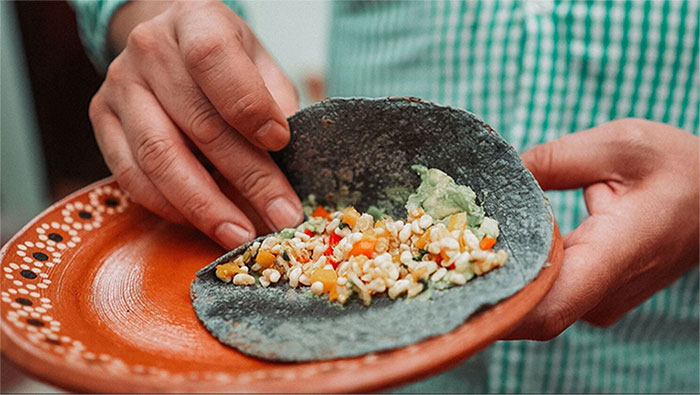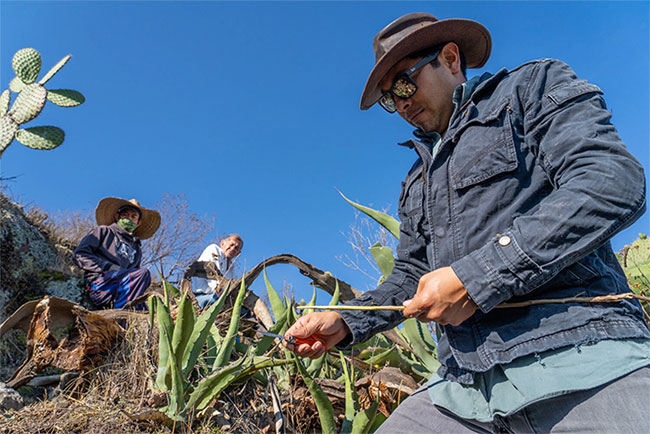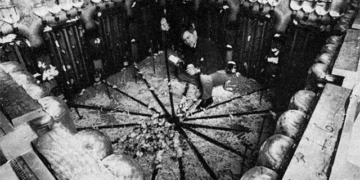This dish is not always available and has become a unique trademark of Mexico.
Located on the hillside of the picturesque Mezquital Valley overlooking the serene countryside of Hidalgo in central Mexico, there is a farm named Teotlacualli.
It is surrounded by vast areas of cacti and Joshua trees. While many vegetables and herbs are cultivated here, this farm was established for a special purpose.
It is home to numerous ant nests and is used to harvest the “one-of-a-kind dish” exclusive to Mexico. This dish is escamol, made from ant larvae and eggs.

Mexico’s exclusive escamol dish.
What is Escamol?
This is a dish that can only be found in Mexico, and no other place can “replicate” it. This dish is so famous and rare that it is dubbed the “caviar of the desert” in this Central American country.
The name escamol comes from azcamolli, a word in Nahuatl that refers to ants and stews. This underground delicacy resembles pine nuts or corn kernels, with a rich buttery flavor and a hint of cheese aroma. Due to its unique taste, escamol is often prepared quite simply, sautéed with butter, onions, and chili, and served with fried corn tortillas and tacos.
Escamol consists of the eggs of the Liometopum apiculatum ant. Ant eggs are typically found in the highlands of central Mexico. The harvesting period for ant eggs is very short, only from February to April. Nowadays, climate change has shortened this collection time to the end of March.

The harvesting of ant eggs happens very quickly.
The harvesting of escamol takes place in the highlands of central Mexico. The nests of this type of ant are usually found deep within certain tree trunks. Each nest contains about 10,000 ants. Approximately 3 kg can be harvested from each nest.
Farmers who know how to harvest carefully can continue to find eggs in old nests. From each nest, they can collect up to 70% of the ant eggs, leaving the remainder to preserve the ant colony. The price of one kilogram of escamol can range from 35 to 100 USD (800,000 – 2.4 million VND).
Escamol is a highly nutritious food, comprising about 50% protein. This is an extraordinary level compared to the approximately 25% protein found in beef. Escamol is also rich in minerals, vitamins, and healthy fats.
An Unforgettable Dish
José Carlos Redon and his uncle have been cultivating ant eggs for the past 11 years. The Teotlacualli farm has been in their family for three generations. Redon is a chef who has studied and worked in various countries around the world, including the United States, Poland, Italy, France, Greece, Spain, and Australia.
Later, the man returned to his farm to develop ant farming. If properly cared for, a farmer can harvest from an ant nest for up to 20 years, but this requires knowledge and appropriate harvesting techniques.
In recent years, escamol has attracted the attention of various high-end chefs in Mexico City and has become a trendy dish on the menus of luxury restaurants.

José Carlos Redon harvesting ant eggs.
Redon’s farm typically supplies 200 kg of ant eggs each year to various restaurants in the city. The traditional escamol recipe is a mixture of green chili, finely chopped onion, and epazote leaves. The ingredients are cooked together for a few minutes until the filling turns white. They are often used as filling for tacos or other dishes.
Typically, the ant eggs are sautéed with butter and spices, served alongside tortillas and scrambled eggs. They can also be combined with guacamole (a sauce made from mashed avocados that may include tomatoes, onions, or bell peppers) to create a delightful dish.
This is a dish that may make many diners feel apprehensive and require courage to try. After taking the first bite, the diner may pause to gather their courage before chewing. However, contrary to what many might think, they have a wonderful flavor. Some people compare them to young corn kernels, though they are milder and have a more distinctive taste; in reality, this is quite a delicious dish.


















































